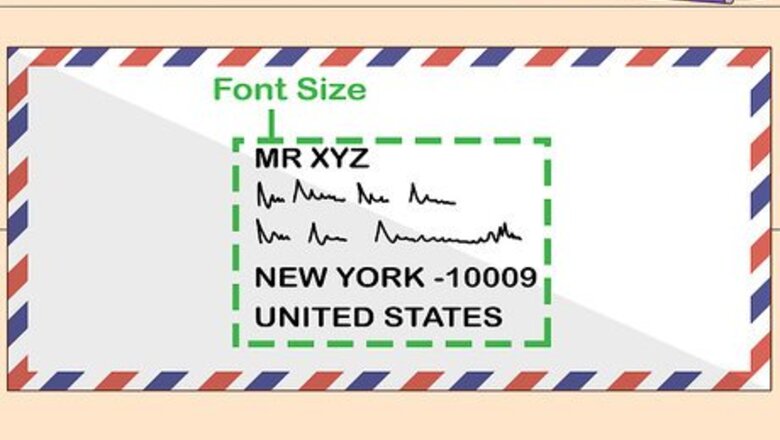
views
Formatting Your Envelope
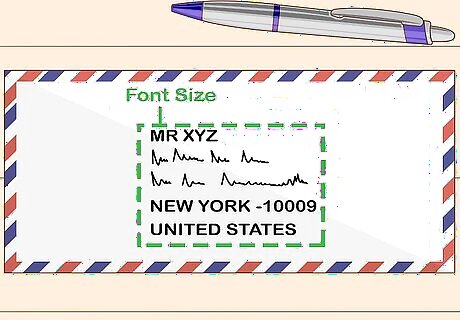
Increase the size of your font. The letters on an envelope should be clearly legible at arm's length. If you're typing your envelope, this may mean that you need to increase the font size accordingly. If you're writing your letter, make sure to use ink that won't smear if the envelope gets wet. Ballpoint pens typically work well. Don't use a pencil.
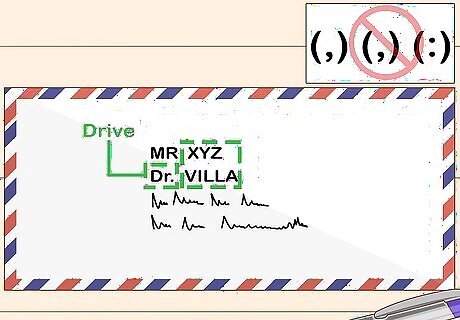
Use capital letters without punctuation. Proper formatting for envelope lettering requires you to write or type in all caps without any periods or commas. This doesn't mean you have to spell out every word – you can still use standard postal abbreviations such as "Dr" for "Drive." If you're not familiar with standard postal abbreviations, check the website of your country's postal service for a guide. The US Postal Service's guide to street suffix abbreviations can be found at https://pe.usps.com/text/pub28/28apc_002.htm.
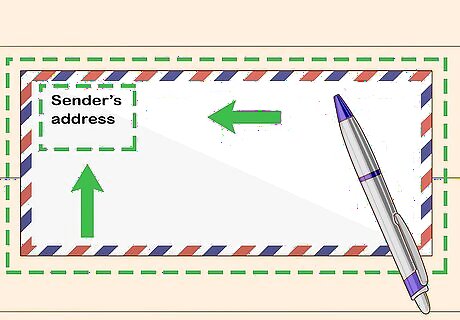
Place your return address in the upper left-hand corner. Leave enough space along the edge of the envelope, provide a complete return address. Each line should be left-justified. Start with your full legal name on the top line. It isn't necessary to include a job title unless it would help direct the returned letter back to you. Put the street address, including any suite number or office information, on the second line. Your city and state or province, along with the postal code, should go on the third line. Use standard postal abbreviations for your state or province. Since you're not supposed to use any punctuation, don't put a comma between the city and state or province. If your letter is international, put the name of your country on the final line of the return address.
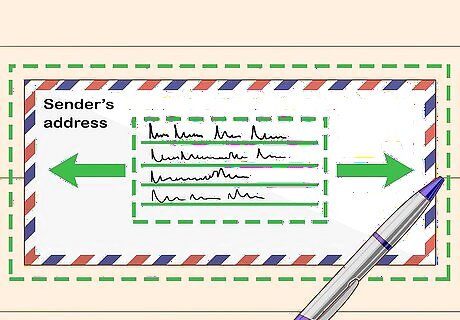
Put the recipient's address in the middle-right of the envelope. The recipient's address should be roughly centered in the middle two-thirds of the envelope, with each line left-justified directly beneath each other. If you're using a word-processing app, look for an envelope template and it should automatically set this correctly for you.
Addressing Your Envelope

Start with the recipient's name. Include the recipient's full legal name. If you include initials, remember not to add a period after the initial – just a single space. Any additional information about the recipient, such as a job title, that would enable the letters get to them more efficiently, should go on a second line.
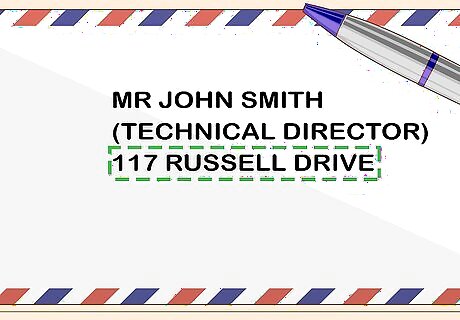
Type the recipient's exact street address. Include a full legal address, including a street number, for the building where the recipient is located. It can be a good idea to check the mailing address on the postal service website of the country where the building is located. Any other information that will help direct the letter within the building, such as a suite or office number, should be included on the same line.
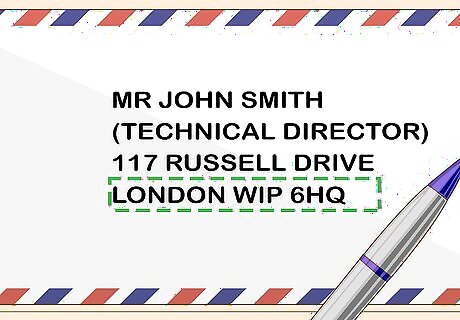
Include the city, state or province, and postal code. When typing or writing the city, state or province, and postal code, do not use any punctuation. Although you would normally put a comma between the city and state in writing, this isn't necessary on the envelope. Normally you will have a single space between each word or set of numbers. Note that if you're sending your letter to Canada, there is an exception. For Canadian mail, put two spaces between the abbreviation for the province and the postal code.

Use the last line for the country's name. If you're sending an international letter, the last line of the recipient's address should be reserved exclusively for the country where the recipient is located. Write out the full name of the country, not an abbreviation. For example, if you're sending a letter to someone in London, you would write "GREAT BRITAIN" on the last line – not "U.K." or "G.B."
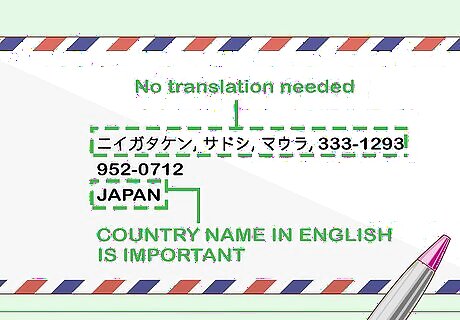
Add translations for languages without Roman characters. If you are sending an international letter and have written the address using Arabic, Chinese, Cyrillic, Greek, Hebrew, Japanese, or Russian characters, include an English translation. If you don't know the English translation, you should at least include the foreign-language words in Roman characters.
Addressing Your Letter
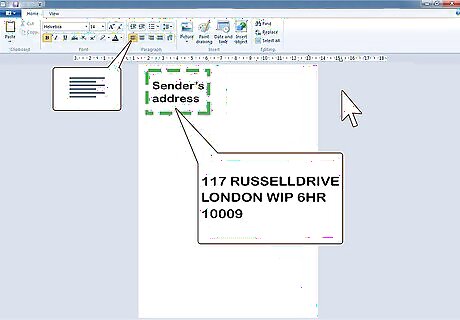
Place your address at the top of your letter. You may have letterhead that includes your name and address in a banner that prints along the top of the letter. If not, you should type your full address in either the top-left or top-right corner of the page. Each of the lines should be left-justified. Include any additional information, such as your job title, that is relevant to the subject of the letter or will help the recipient more easily identify you.
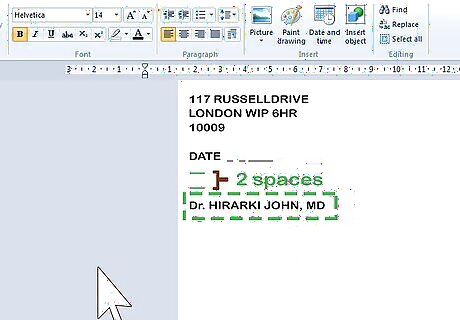
List the name of the recipient with the appropriate courtesy title. After your address and the date line, double-space and begin the address of the recipient by listing their full name and any legal or courtesy title, such as "Mr.," "Ms.," or "Dr." For medical doctors, it is appropriate to use either "Dr." before the name, or "M.D." after their name, but don't use both. For example: "Dr. Jan White" or "Jan White, M.D." Leave off gendered courtesy titles such as "Mr." or "Ms." if the recipient has a gender-neutral name, or if you're unsure about their gender identity.
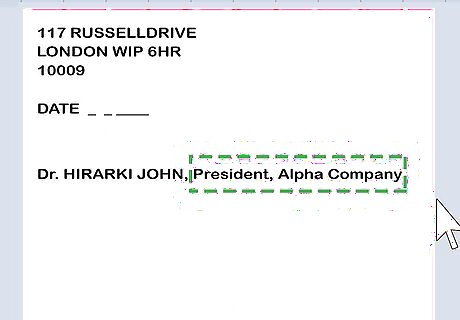
Provide the recipient's job title. Use the job title that correctly corresponds to the purpose of your letter. If the recipient's job title is irrelevant to your letter, or you're writing to them personally, you may choose to leave the job title out. Including the job title means you're addressing the recipient in that capacity. For example, if someone is both President and CEO of a company, you may address them as President, as CEO, or as both.
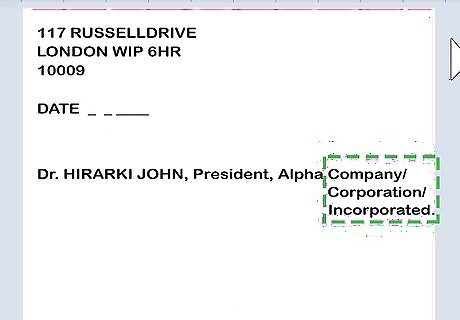
Include the name of the business. Following the recipient's name and any job titles, move down to the next line and type the full legal name of the business. Check the website or business publications to make sure you get the exact name. Words such as "corporation" should only be abbreviated if they are done so in the legal name of the business. Capitalize and space words exactly as they are done in the business's legal name, including any special characters. For example, if the recipient works at Yahoo, write the business name on your letter address as "Yahoo!", which is the registered legal name of the business.
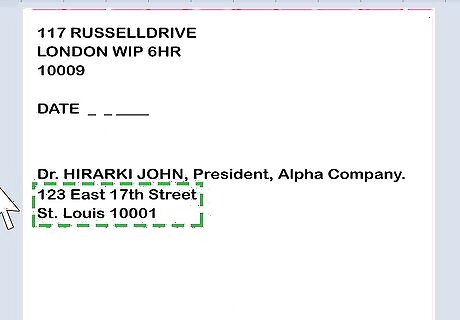
Write out the recipient's address. On the next lines, provide the street address, suite or office number, and other address information completely written out with no abbreviations and correct punctuation. Use numerals for street numbers, unless the street number is part of the name of the building, such as "One Town Plaza." Spell out the full name of the city, then place a comma, then type out the full name of the state or province and the postal code. If it's an international letter, include the full name of the country on the last line.
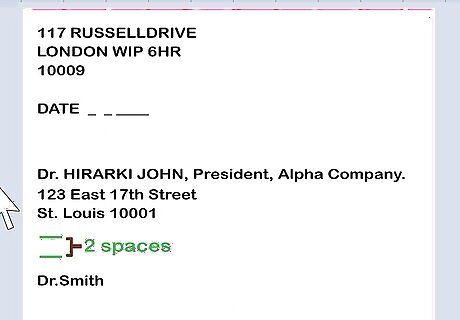
Double space before starting your letter. While the address itself typically should be single-spaced, you'll want to include a blank line before writing the salutation. Then double-space again before the body of the letter.




















Comments
0 comment